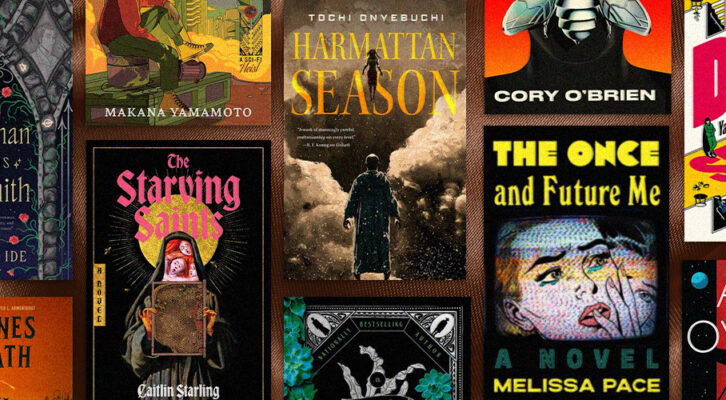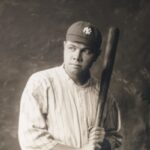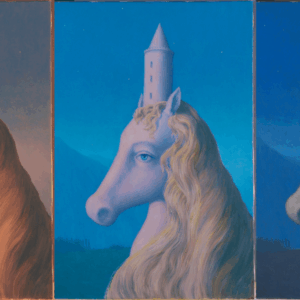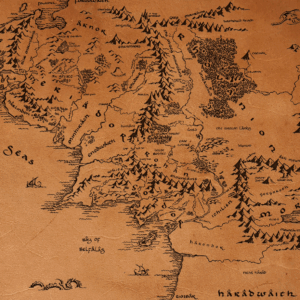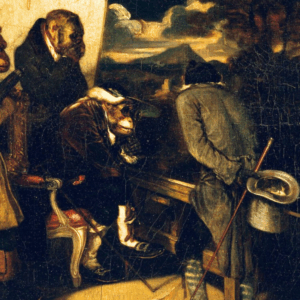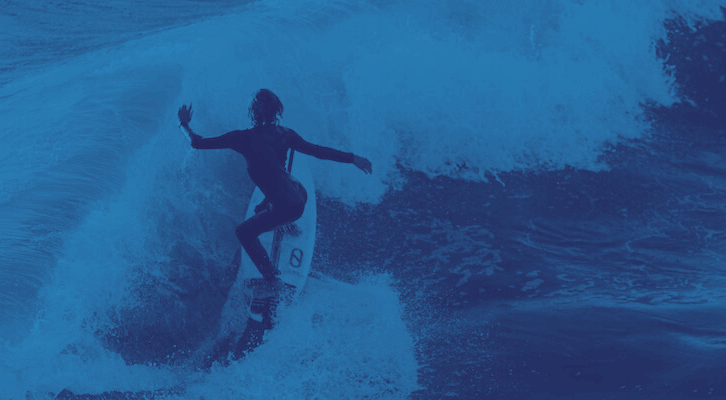
Muscle Beach: Surfing with Bonnie Tsui
Mickie Meinhardt Profiles the Author of “On Muscle,” on a Surfboard
When author Bonnie Tsui and I meet just after Memorial Day on the barrier Assateague Island in Maryland to go surfing, the day is improbably perfect. Seventy-five degrees, not a single cloud in the baby-blue sky, a whiff of a moderating offshore breeze perfumed by sea salt and sun-warmed sand, and best of all, gorgeous stomach-high waves waiting for us just over the dunes in the Atlantic Ocean tinged a rare, bright, kelp-green.
When we planned this rendezvous, a stop on Tsui’s tour for her new and excellent book On Muscle: The Stuff That Moves Us And Why It Matters, which she will be reading from and talking about with me later that evening, surfing together was a fingers-crossed pipe dream; the East Coast has great waves, but unreliably so, and our idea of talking about muscles while using them in our favorite sport was entirely Mother Nature-dependent. That the sea delivered one of the best swells in weeks when this waterwoman writer was in town feels like not quite a coincidence.
Tsui is the author of two previous nonfiction books, Why We Swim and American Chinatown, and one children’s, Sarah And The Big Wave, and a celebrated journalist. She is also a lifelong athlete, especially of watersports (swimming, primarily, as well as surfing) and an avid strength trainer—perhaps obviously, given that her latest work is On Muscle, shouts with Tsui’s own enthusiasm, awe, and respect for the human body’s prime movers.
“I always wanted to write about them,” she says, of muscles. The trick was finding out how.
She landed on a blend of human interest story, personal narrative, and science to show muscles’ awesome beauty and ability. Tsui’s glorious accomplishment with the book is in capturing unsuspecting audiences; turning a subject most people barely consider into a whole-scale story of human experience via physical metaphor. The book opens with Tsui recalling her fitness-devoted father’s refrain from her childhood: “Make me a muscle.” Tsui would oblige, and has continued to throughout her life, making athleticism and personal strength pursuits, particularly swimming and surfing, as integral to her life as writing.
Tsui herself is pure muscle, her petite frame radiating a comfortable power as we tug on wetsuits and booties in the parking lot—the local water still hovering at a chilly 60 degrees—and rub wax on the two surfboards I brought for us; a 5’6” Lost Mayhem fish for me, a 6’8” Thomas twin-fin for her. At the ocean’s edge, she asks quick questions about the break, sussing out what to expect in the water. As a veteran of the Bay Area’s waves, including the intimidating Ocean Beach, she is used to much bigger swell than what we’re about to jump into, and when we paddle the few hundred yard out through whitewater, she keeps pace easily.
“What’s always saved me is that I can paddle forever,” she tells me, laughing, in the lineup; a lifetime of swimming primed her to hold her own in the notoriously heavy break. “That’s what helped, too, when I got into surfing.” As I watch her paddle for a set wave, I see what she means. Propelling a board rapidly across water only appears effortless when the person doing so has incredible upper-body strength; the quick yet seamless motions that make professional surfing look easy. (Ask any average surfer how humiliating it is watching themselves on a video clip and realizing how slow they’re going when the reality felt like flying.)
Tsui has this; as soon as she starts paddling, she’s off. It is this strength, and her intuitive understanding of not only her own body but also the body, that makes her writing about it so compelling. She understands that while we all have a body, its inner workings may be a mystery even to the rather informed, and that unlocking its secrets isn’t just satisfying for a knowledge perspective—you can feel this information, quite literally, in your every motion, and it makes the life-giving form we inhabit seem that much more incredible.
My advance copy of On Muscle arrived just as I was embarking on a strength training journey prior to a winter surf trip to Nicaragua (hoping to get some of that paddling ease). Hearing the book’s accounts of accomplished muscle-women and -men, and learning how muscle effects literally every part of our human existence and performance—mental and emotional as well as physical—I found myself wanting to push further; to see what this body of mine could really do.
Tsui wrote about seeing her father walk past the pull-up bar hanging perpetually in her childhood home, stop to do a few, and continue on; the same thing my surfer brother used to do. Reading this anecdote made me stop mid-page and go find our old over-the-door bar, affix it, and try a few chin-ups of my own. I got to 10 without a problem, shocking myself, and returned to the book vibrating with adrenaline.
That we are together on these waves is the work of literal years of strengthening our bodies and resolves, in the gym and the water, as well as on the page and in life.
I tell Tsui about this as we trade waves, sparking a conversation about the mechanics of paddling—how much you really need to in surfing (so much more than you think as a beginner), and, as she notes, how many different ways to paddle there are, which I hadn’t really considered; how it changes depending on your board, your session goals, the swell. And how your muscles change as you progress, altering your body mechanics in the water.
“My surf paddling has ruined my swim paddling,” she laughs. “But it’s okay! We’re in a different phase of life now, Mickie!”
We are. And, at least for me, that’s in part from her influence. Like so many who read Why We Swim, I was inspired to seek more of the water after reading Tsui’s words. Five years later, I’ve gone from an occasional lap swimmer to centering nearly my entire life around surfing. That I hired a trainer to further it, have travelled across the world for it, and most pivotally, have been wildly excited to see how it has morphed my muscles speaks volumes; finding myself marveling at my biceps and back muscles in the mirror was never something I thought I’d do. As Tsui notes in On Muscle, women have historically been discouraged from having “too much” muscle. Per male gaze-dictated societal norms that women internalized, there was a finite “acceptable” amount, toned but not buff, beyond which a woman lost her sex appeal. I’d absorbed this message fully; I’ve been active my entire life but, until recently, actively feared having any noticeable muscle. It wasn’t until actual biceps appeared after so much water time, and I felt how strengthening them helped me love my sport even more, that I began to see the error in that—and the sadness, too; another thing about my body I was subconsciously taught to belittle and had to fight to learn to love.
Having a strong body puts you in a literal position of power, which is exactly why women were historically discouraged from it. On Muscle’s primary example of this is Jan Todd, the first female powerlifter and “the reason we do any of what we do in a gym now,” Tsui notes. Being the first to morph her body into a tower of rippling muscle meant Todd did not have an easy go of it. But it also meant that ever after, women had someone to look to and say I want that kind of power. “Muscle is muscle,” Todd says to Tsui. “What’s different is the permission society gives us to use it.”
I watch Tsui stroke hard for a set left and take off before I have to duck-dive under the same wave. When I surface and turn to catch the wave behind hers, she is already a hundred yards away, still cruising, arms in a balanced T. I pop up and for a moment we are both in trim, gliding southward on our own oceanic currents of energy that we had to work to catch, not just now, but for hundreds of sessions of prior that built the strength to make todays so enjoyable. Tsui didn’t start truly surfing until her 30s; I was 31 when I took it up seriously. She has been one of the people I’ve looked to tell myself, a thirty-something woman pursuing a sport that most learn in their teens, yes, you can.
When we began surfing, we had not-young muscles that needed extra attention; a lifetime of land balance to forget when we stood on a board; and yes, so much paddling to turn into muscle memory. That we are together on these waves is the work of literal years of strengthening our bodies and resolves, in the gym and the water, as well as on the page and in life. Every lived moment has brought us to this point, where we have met after years of correspondence, bonding over the ocean and how it feels to be drawn to it over and over—much like a wave, a current of energy that steadily travels thousands of miles before it reaches a shoreline where someone (perhaps a 30-something writer) will attempt to generate enough of their own muscle-borne force to meet it, catch it, and ride it to glory.
“Why do we like muscle?” asks sports medicine doctor Harris Masket in Tsui’s book. “Muscle is the ability to change.”
We head in when the tide drains the sandbar from fun to shallowly sketchy, Tsui on the wave just before me, and embrace on the sand with hyper-stoked grins; only a surfer knows the gift of giving someone, especially someone on a book tour, a few hours of waves. We walk back up the dunes to clean up—we have to be in conversation with a book club in three hours—with a surf buddy of mine, laughing and recounting the waves we just rode, standing tall with stoke and the pride that comes with muscles filled to the brim with their own power.
“What did writing this book teach you about your own body?” I ask Tsui later, during our bookstore conversation.
She pauses thoughtfully before answering:
“It made me appreciate it so much more. What it can do.” She smiles softly, and the entire room nods. If there is one thing we can all do with more of, it’s love for the body, and its beautifully persistent power.
Mickie Meinhardt
Mickie Meinhardt is a writer and editor, and the owner of The Buzzed Word, an independent bookshop plus natural wine shop and bar in her hometown of Ocean City, Maryland. Her work has appeared in The Cut, The Bitter Southerner, Eater, Guernica, and others; she also writes the newsletter Wax On, and has a memoir and a novel on submission. She holds an MFA from The New School, where she was a Creative Writing Fellow. When she isn't recommending books or bottles, she is probably surfing.











